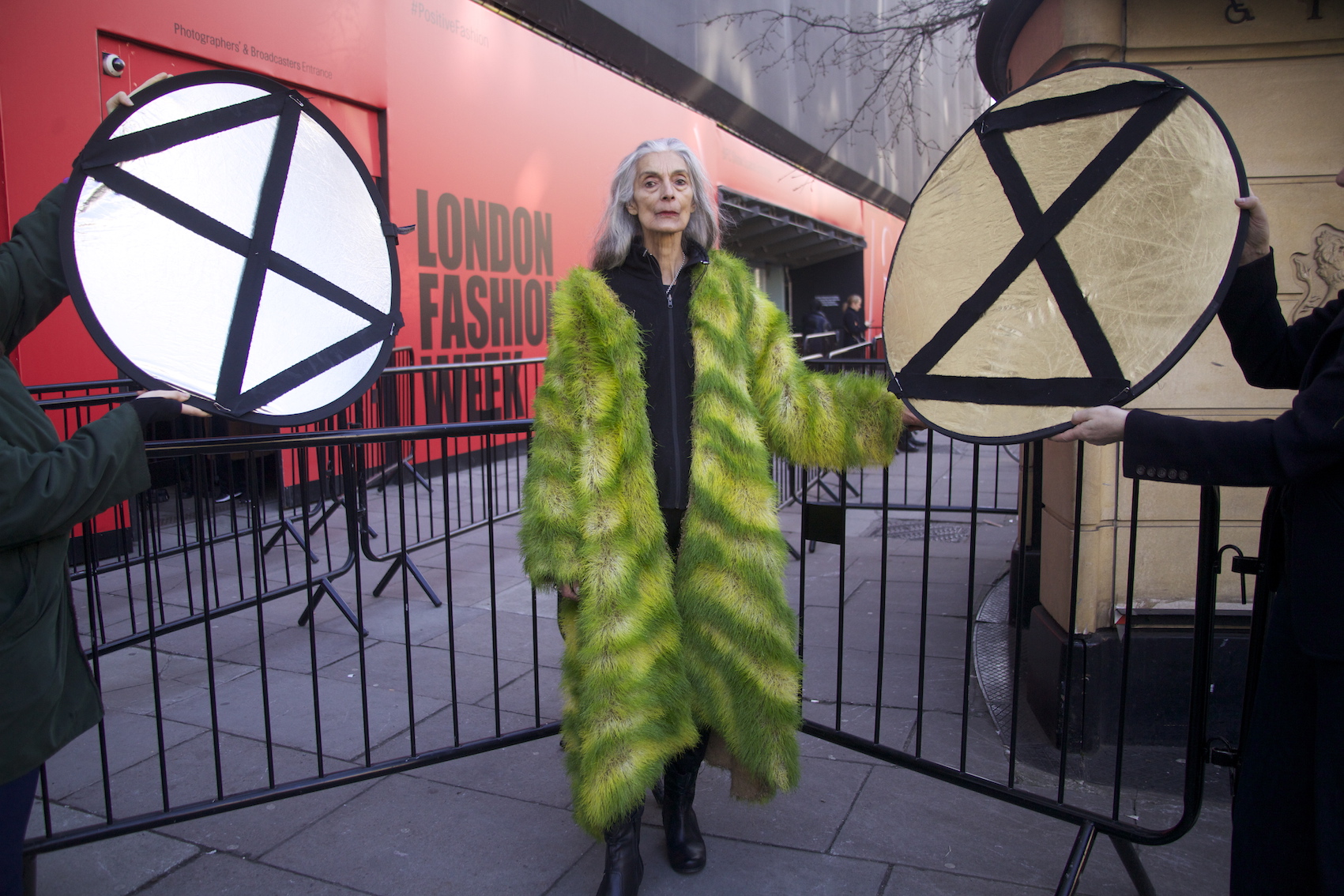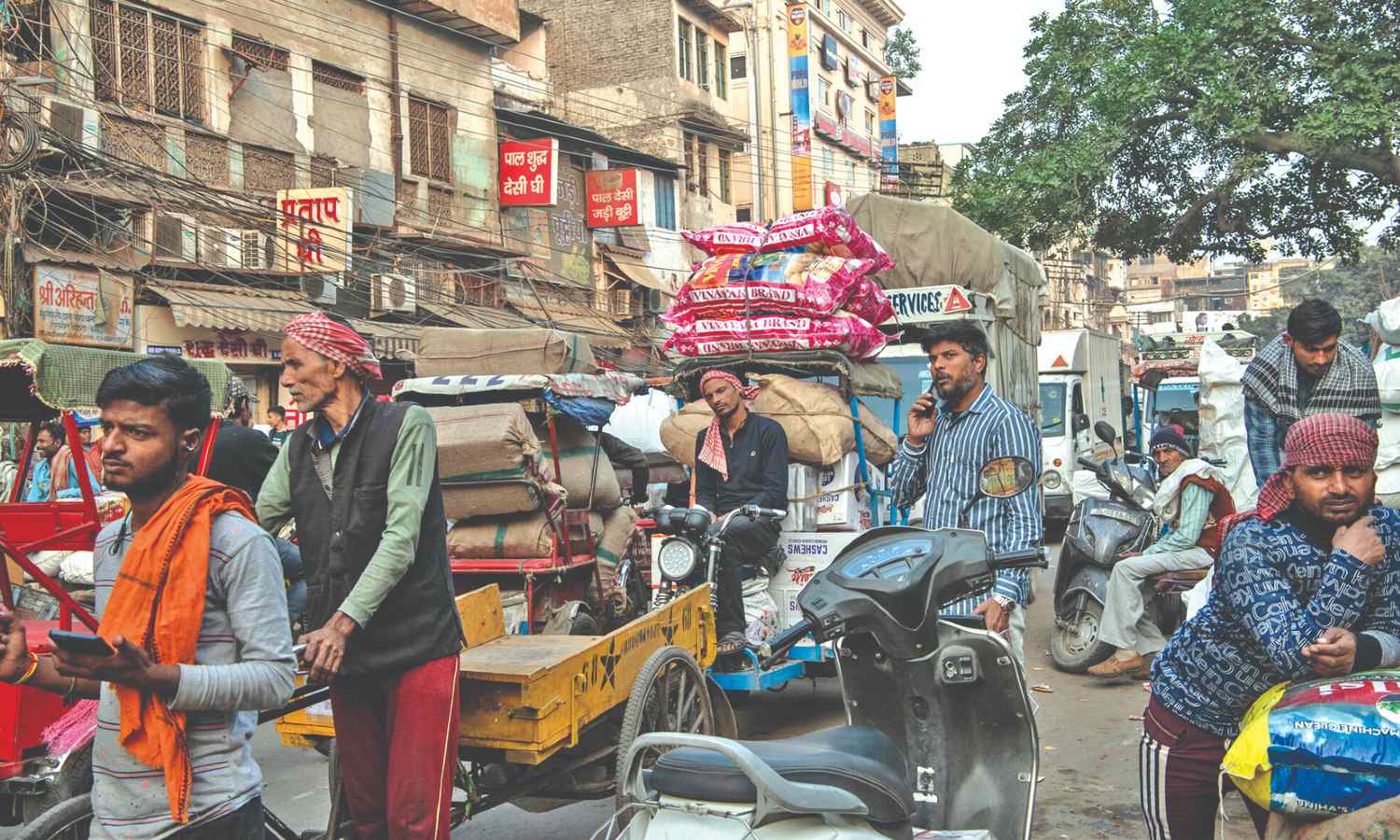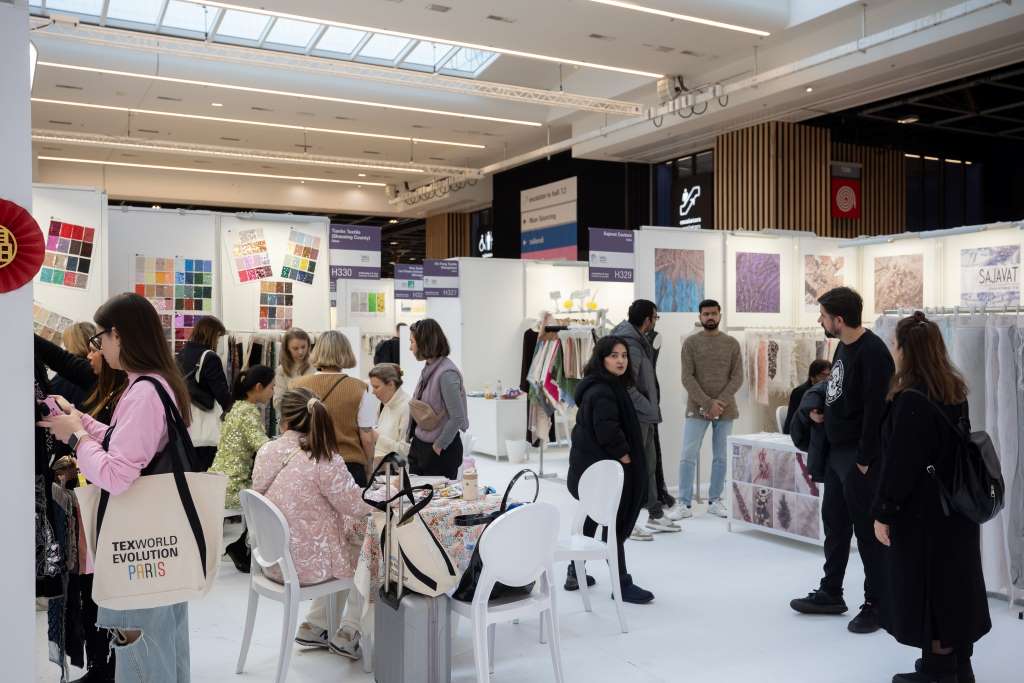FW
OTA and Textile Exchange have signed a MOU to strengthen the organic textile industry’s national public policy influence and public relations to benefit the organic textile sector and the two organisations.
Under the proposed MOU, Textile Exchange members qualifying for OTA trade member status but not currently members can get a one-year discount of 25 per cent off their OTA membership fee. At the same time, OTA members qualifying for Textile Exchange member status but not yet members can obtain a 25 per cent discount for one year to belong to Textile Exchange.
The Organic Trade Association (OTA) is a membership-based business association for the organic industry in north America. It is the only trade association focusing exclusively on organic agriculture and its products. OTA represents businesses across the organic supply chain and addresses all things organic, including food, fiber and textiles, personal care and pet products, and new sectors.
The association has been a key player in shaping both the regulatory and market environment for organic products. Textile Exchange is a non-profit organisation incorporated in 2002. It’s based in the US. It operates internationally and is committed to the responsible expansion of textile sustainability across the global textile value chain.
textileexchange.org/
Alliance, the North American retailers’ group, says 23 factories in Bangladesh have failed to carry out the required remediation work on time. The group has threatened to cut business relations with the factories if they fail to make progress immediately. Alliance says the progress of remediation work in the units was 4 to 44 per cent and the structural safety in 11 factories was at severe risk. It says some of the factories have made progress in some areas but none has addressed high priority issues.
The factories want six months’ time to undertake the remediation work. Alliance says owners have not paid heed to repeated reminders and that they have already been given time ranging from seven to 13 months for corrective action.
After the Rana Plaza building collapse, which killed more than 1,100 people, mostly garment workers, in April 2013, North American retailers, including Walmart and Gap, formed the Alliance undertaking a five-year plan, which set timeliness and accountability for inspections, and training and workers’ empowerment programs.
Alliance started inspections in the garment factories in February 2014 and completed primary safety assessment of its listed factories of more than 600 in number in July that year.
www.bangladeshworkersafety.org/
Fast Retailing’s owner, Tadashi Yanai, opened the flagship Uniqlo store on New York’s Fifth Avenue in 2011, with a vision of making it the world’s top brand. However, ten years after the Japanese billionaire’s first foray in the US market in 2005, Fast Retailing has incurred losses.
Uniqlo casual clothing chain has lost $5 billion (Dh18.35 billion) in market capitalisation. This is a drop of over 12 per cent; it shocked investors with a rare miss in its annual profit targets. The brand’s low recognition in suburban America and a weak management were blamed for the expanding losses at its US operations by executives.
However, analysts believe that the problems in the US are quite deep. Sho Kawano, an analyst at Goldman Sachs says they need to redo everything from products, branding, and e-commerce, to management and that there are huge challenges ahead. Kawano estimates US losses were over 10 billion yen ($84 million, or Dh304.38) for the fiscal year that ended in August, and anticipates the US business will remain loss-making.
Yanai, though says that he wants sales to reach 100 billion yen in three years, while they do not disclose their US revenue. Sales in China, Hong Kong and Taiwan have already topped 300 yen billion. Yanai said that the retailer would be more selective about choosing store locations and the company has plans to open only five new Uniqlo stores in the US compared with 17 for the 2014-15 fiscal year. The brand would be bringing together and dispatch to the US their elites worldwide to rebuild our management, said Yanai.
The Bangladesh Garment Manufacturers and Exporters Association (BGMEA) is contemplating a revival of biometric database of garment workers. The BGMEA had taken the initiative of preparing a biometric database of workers and signed a memoranda of understanding (MoU) with two IT farms: Systech and Tiger IT, after the Tazreen Fashions fire in November 2012 that killed 112 garment workers.
Atiqul Islam, who was the BGMEA President when the Rana Plaza tragedy happened, where 1,100 people, mostly garment workers lost their lives, has asked BGMEA member factories to prepare a biometric database of their workers. On May 20, 2013, he instructed factory owners in Ashulia to complete biometric database of their workers by August 30 that year.
The factory owners showed little response though the BGMEA announced that biometric database of workers was mandatory. Only 300 factories had registered with the BGMEA for the service while 250 factories had full-fledged work going on that covered a totally 1,50,000 workers up to March 2014. Factory owners expressed their unwillingness to introduce biometric database, citing political turmoil and pressure from buyers to meet safety requirements as reasons.
Mahmud Hasan Khan Babu, Vice-President, BGMEA said that they would be signing the new MoU this week with Tiger IT and Systech Digital Ltd to revive the biometric capture of the RMG workers. The work of biometric database would start from mid-February 2016 targeting the completion of biometric capture of workers in 2,000 factories by June 2016, according to the agreement, he added.
Kingpins Amsterdam, held on October 28 and 29 2015 at Westergasfabriek was a huge success. International visitors from countries such as Japan, Colombia, India, the US, and Bangladesh, besides the Southern and Northern European countries were attracted by the show.
Brands such as Tommy Hilfiger, Hugo Boss, Levi’s Scotch & Soda and G-Star visited the show. The focus was on new fibre mixes for better interaction with the wearer, greater hype on stretch fabrics, and denims developed with the aim to preserve the environment better. These were the novelties for spring/summer 2017.
Special fibre blends were showcased by many manufacturers. One of them was ITV, which launched a new denim that also has a small percentage of tear-proof silver and, even if the garment aged and carries breakings, the brightness of silver of these fibres shines through the weave of the fabric. Besides, ITV also developed new denim mixing cotton with merino wool, cashmere, silk and hemp. Bossa’s new invention of denim incorporates 15 per cent silver fibres, which protect the wearer from dangerous radiations such as from cellular phones. Ortabluefrequency was launched by Orta, which is a series of fabrics that has high-tech performance such as fabrics with over 30 UV ray sun protection, liquid resistance properties and moisture-wicking properties.
Stretch developments were also on show and many launched multi-directional stretch denims and Invista’s revolutionary Hybrid technology concept.
In 2013, Swedish fast fashion retailer H&M forayed in Africa for sourcing, the first retailer to do so. Since then the brand has made it obvious that Africa is the place for them in the future. To test waters, Ethiopia was the country H&M started with a small operation, which is now its regional hub. Later, the company opened production in Kenya, and things are fine so far.
Hande Diltemiz, H&M Country Manager, during a panel on best practices for a sustainable African apparel value chain at the Africa Sourcing show in Ethiopia recently, said that they were excited to be in the continent and looking for more opportunities there. He added that they wanted to contribute to sustainable growth in Africa.
Stressing on the importance of setting up sustainably in the region from the start Diltemiz said H&M’s focus is on doing the right thing from the start, outlining best business practices for local manufacturers and suppliers, establishing good labour practices, securing environmental performance, and developing a sustainable cotton industry.
However, this cannot be compared to Asia and Ethiopia has its own challenges and they need to find out how to do things better there. H&M looks at sourcing form Africa as a long-term exercise and Diltemiz says that they were first ones and more buyers and investors would be coming to Africa in the future. She believes that in teh end, it will be a collective success.
According to a report by International Cotton Advisory Committee, Chinese imports are projected to fall by 24 per cent, to less than 1.4 million tons. China will likely remain the world’s largest importer in 2015/16, but its share of world imports has fallen from 55 per cent in 2011/12 to 22 per cent in 2014/15 and may only reach 17 per cent in 2015/16. Instead, imports to other Asian countries are taking on a larger share and will partially offset the decline.
In 2011/12, imports by the rest of Asia accounted for 31 per cent of world imports. In 2015/16, Asian imports excluding China are expected to reach 4.5 million tons, representing 60 per cent of world imports. Bangladesh, Vietnam and Indonesia are the three largest importers in the region outside of China. Imports by Bangladesh may slightly exceed one million tons in 2015/16, up 4 per cent from last season, while imports by Vietnam are projected up 5 per cent to 990,000 tons. After declining in 2013/14, imports by Indonesia increased 13 per cent to 735,000 tons in 2014/15 and may reach 780,000 tons in 2015/16.
Mill use in Asia outside of China is forecast to rise by 4 per cent to 12 million tons, representing 48 per cent of world consumption projected at 25 million tons in 2015/16. Mill use in India is expected to reach 5.6 million tons, up 3 per cent from 2014/15 and in Pakistan, 2.6 million tons, up 2 per cent from 2014/15. The cotton trade remains competitive as China’s cotton policy evolves and cotton-exporting countries continue to seek new markets. However, world production is forecast down 9 per cent to 23.9 million tons, about 1.1 million tons below consumption.
Although production in the United States is projected down by 11 per cent to 3.2 million tons and exports down by 9 per cent to 2.2 million tons, it will likely remain the world’s largest exporter. India, the world’s second largest exporter, could see a small recovery in 2015/16, with exports forecast to increase 15 per cent to 1.1 million tons.
www.icac.org
Aditya Birla Group firm Grasim Industries has reported a 17 per cent increase in consolidated net profit to Rs 489 crores for the September quarter. Total consolidated revenue for the company stood at Rs 8,393 crores.
The company produces viscose staple fibre (VSF) used in apparel and cement that makes more than 90 per cent of their revenues. “The company will continue to focus on expanding its domestic market through product development activities, working closely with brands, designers and retailers. A better customer connect through brand Liva is leading to growth in demand for VSF based products in the textile value chain,” it said in a statement.
Revenue for viscose staple fibre (VSF) increased by 13 per cent driven by higher sales. "In the VSF business, prices are likely to be influenced by the developments in the industry such as the resumption of operations at some of the shut capacities in China and prices of competing fibres,” the company added.
www.grasim.com
Invista, owners of the Lycra brand, will unveil a transformative patent pending technology for knit denim fabrics at the upcoming Kingpins Denim Show in New York after showcasing the innovation at the Amsterdam show in October. Under the platform of Lycra Hybrid technology, these fabrics combine the best of both worlds – the comfort and flexibility of a knit with the authentic aesthetics and performance of a woven.
Meanwhile, Invista was recently granted the Ringier Technology Innovation Award 2015 for its Novadyn transparent polyamides, recognizing their new-to-market polyamides with a unique combination of performance, cost effectiveness and recycled content. Novadyn polyamides can be used in molded parts, filaments, fibres, and films, and can be used in a variety of applications including automotive, electrical, industrial and consumer products.
Based on extensive trials with fit models and Invista’s proprietary wear force testing protocols, the Lycra Hybrid fabrics have been segmented into three different categories, each with unique performance levels -- level 1 offers everyday denim fabrics that meet Invista’s standards for Lycra brand; level 2 are fabrics that meet Invista’s shaping technology standards can qualify for the Lycra Beauty brand; and level 3 are fabrics that meet its athleisure standards and can qualify for Lycra Sport branding.
The company began working on the new technology several years ago as they saw performance fabrics taking an increasingly important role in the denim space. The fabrics employ a specific patent pending construction to achieve the look and feel of traditional denim, but with much greater stretch and flexibility. Invista worked under confidentiality agreement with several mills on this project including Advance Denim of China, Knitdigo of Taiwan, Santanderina of Spain, and Willy Hermann of Austria. Garments from each of these mills will be on display at the Kingpins Shows.
It will also be hosting a seminar on the technology at the Kingpins show that will include a panel discussion by representatives of some of the mills, as well as a video featuring students who have personally tried jeans made with the new technology. The New York edition of Kingpins Denim show will be held on November 3 and 4, 2015.
According to ICAC, subsidies offered to the cotton sector, including direct support to production, border protection, crop insurance subsidies, and minimum support price mechanisms are estimated at a record $10.4 billion in 2014/15, a considerable rise from a record of $6.5 billion in 2013/14. Twelve countries provided subsidies in 2014/15, and the subsidies averaged 22 cents per pound, up from 15 cents per pound in 2012/13.
Since 1997/98, when the Secretariat first began reporting on government measures in cotton, there has been a strong negative correlation between subsidies and cotton prices: in years when prices are high, subsidies tend to decline and in years when prices are low, subsidies tend to rise. This relationship was maintained during 2014/15. The Cotlook A Index declined from an average of 91 cents per pound in 2013/14 to an average of 71 cent per pound in 2014/15, and subsidies provided to cotton growers increased.
In some countries, such as Brazil and India, minimum support price programs were triggered during 2014/15 because market prices fell below the government intervention prices. Some countries provided subsidies for cotton inputs in 2014/15, especially for fertilizers, storage, transportation, classing services and other marketing costs. At the same time, the use of crop insurance subsidies is also on the rise.
The share of world cotton production receiving direct government assistance, including direct payments and border protection, increased from an average of 55 per cent between 1997/98 and 2007/08, to an estimated 83 per cent in 2008/09. During 2009/10 through 2013/14, this share declined and averaged 47 per cent. In 2013/14 the proportion of production receiving direct assistance is estimated at 44 per cent, however, the share increased to 76 per cent in 2014/15.
www.icac.org












